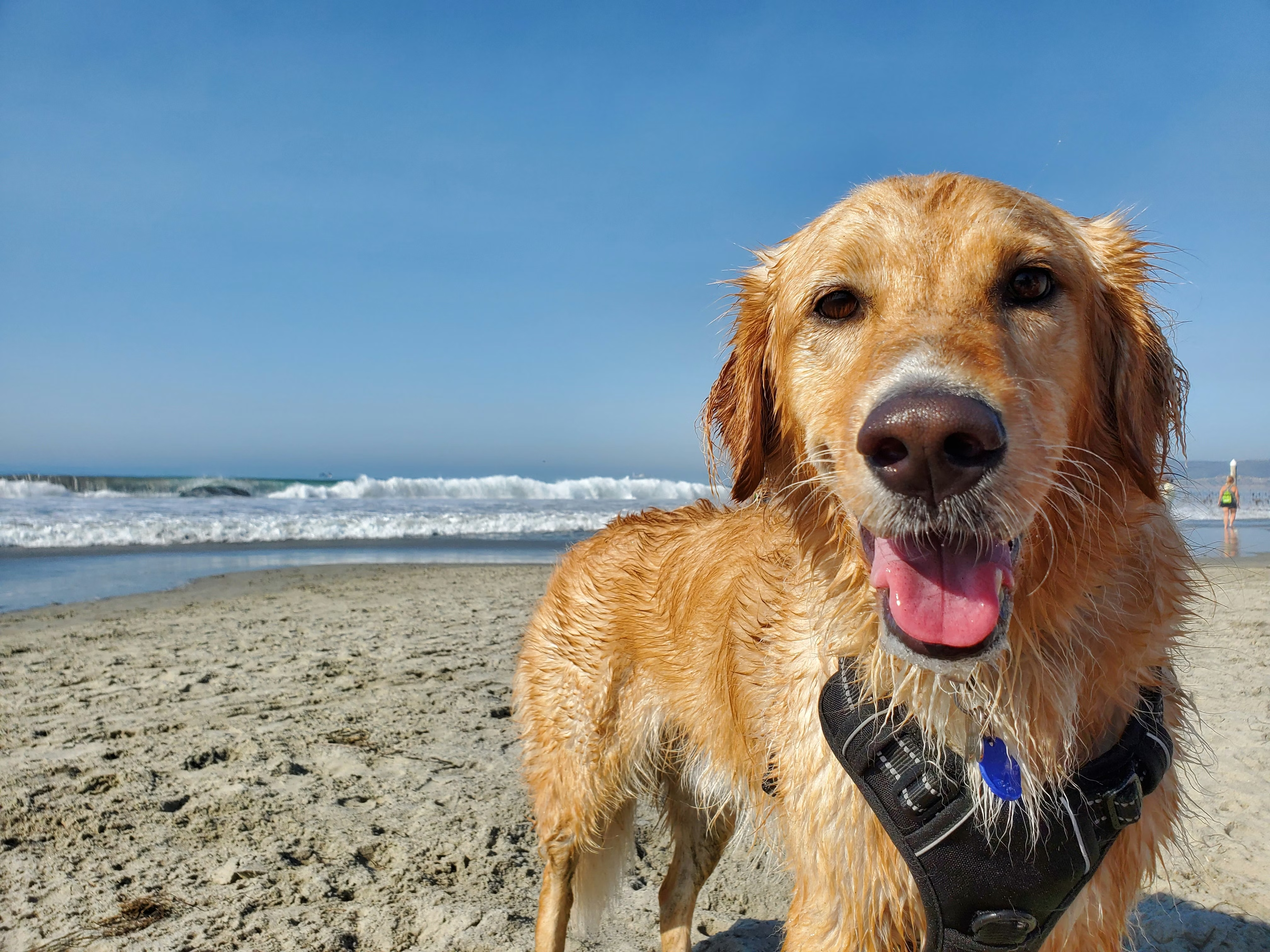Long, sun-filled days are perfect for outdoor activities or lounging on the patio with your pet. But unfortunately, the season also brings several hazards for our furry friends. To ensure your summer includes happy memories only, follow these tips for keeping your dog or cat comfortable and safe.
Pay attention to the temperature
If it’s too hot for you, it’s probably too hot for your pet too. On sweltering days, limit the amount of time your dog or cat spends outdoors. If possible, keep activities like walks and play sessions to early mornings or evenings when the temperature is cooler. And keep in mind your pet’s breed. Brachycephalic breeds such as Pugs, Bulldogs, and Persians are more prone to overheating due to their short muzzles.
But the air temperature outside is only one of the concerns. Surfaces where your pet walks, such as asphalt, stone patios, or vinyl decks, can get extremely hot and burn a dog or cat’s paw pads. If you place your hand on a surface and it’s too hot to keep it there for more than a few seconds, it’s too hot for your pet to walk on.
And remember that the inside of a car can get very hot, very fast. In fact, on an 85-degree day, the interior of a vehicle can reach over 100 degrees in just ten minutes. For this reason, never leave your pet in the car on a warm day, even with the windows cracked.
Knowing the signs of heat stroke is also important. These signs include excessive panting, red gums, disorientation, restlessness, drooling, vomiting, and diarrhea. If your pet is experiencing any of these, take them to the veterinarian immediately.

Beware of dangerous plants and weeds
Before planting anything in your yard, it’s a good idea to check a resource like Pet Poison Helpline to make sure the flowers or plants you want aren’t toxic to pets. But poisoning isn’t the only hazard.
Foxtail weeds pose a real danger to dogs and cats. When the plant dries out, its barbed needles can get lodged in a pet’s eyes, ears, or nose, pierce their skin, or even burrow into their muscles and organs. These needles can cause infections from the bacteria they carry, or their spiky points can tear up a pet’s insides. Issues stemming from foxtails can be painful, costly, and in some cases, fatal.
If your dog or cat has been around foxtails, inspect them carefully for barbs, paying extra attention to their paws, ears, and between their toes. Keeping their fur trimmed, especially around the paws and legs, is also a good preventive measure.
Keep pets hydrated and cool
On hot days, ensure your pet has access to cool places to rest. When outside, this means shady areas on the grass out of the direct sun. Inside, air conditioning and fans will help keep them comfortable.
Hydration is critical, so be sure to fill water bowls several times a day. (Pro tip: add ice cubes to the bowl to keep the water cold longer). And since summer and cool treats go hand-in-hand, consider filling a kong with water and freezing it for your dog, or make a frozen wet food catsicle for your feline friend.

Practice water safety
Even pets that are excellent swimmers need supervision around water. When you’re not outside with your dog or cat, swimming pools should be covered or fenced-in. There are also alarms you can buy to alert you if your pet falls in the water.
If you’re heading to the lake or ocean, remember that your dog may not like water as much as you do. If you’re unsure how they’ll react around water—or what their swimming skills are (if they have any)—keep them on a leash and let them slowly explore in shallow water. Keep in mind that your pup won’t understand how to navigate riptides or fast-moving currents. It’s up to you as the pet parent to read the situation and steer clear of the water if conditions are dangerous. Doggie life jackets or other flotation devices are also a great idea for dogs that may not be strong swimmers or any pup accompanying you on a boat trip.

Protect your pets from sunburn
Yep, pets can get sunburned, too. Dogs and cats with short, light-colored fur (or no fur!) are most at risk. Apply sunscreen to areas where their fur is the thinnest, like the nose, belly, groin, and tips of the ears. Just be sure to choose a sunscreen that’s made specifically for pets, as not all human products are safe for dogs and cats.
Don’t forget about parasite preventives
Fleas, ticks, and heartworm-carrying mosquitos are most prevalent in the warm summer months. Talk to your veterinarian about the parasite preventive that’s best for your pet. Then set a reminder on your calendar, so you don’t forget to give them a dose.
By keeping all of these safety precautions in mind, you can help your pet have a fun and safe summer!















